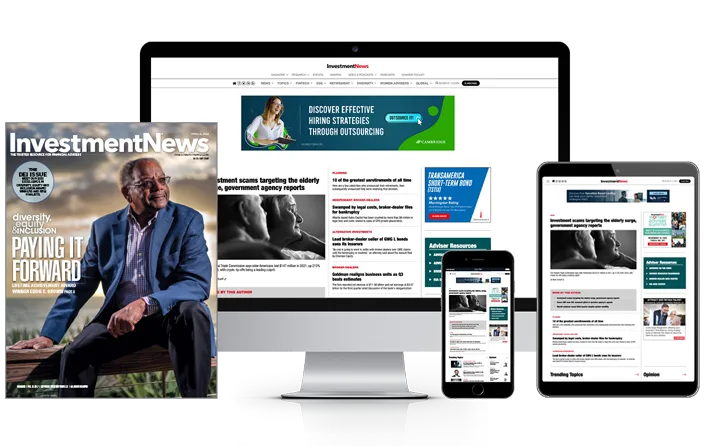Coffee is up 80% this year. Lean hogs are up 28%. Corn is up 13%. Gold is up 12%. Most of these same commodities were down last year, and any of them could fall at the drop of a hat.
So how do rational investors participate in the upside for unpredictable commodities without losing their all-cotton shirts?
One approach is to invest in a diversified basket of commodities. That lowers the chance of a big loss and adds diversification to an investment portfolio, since commodities tend not to track the stock market. While there are 149 commodity ETFs, only a handful are broadly diversified. As with any ETF that uses futures contracts — agreements to buy or sell a certain asset on a set date at a set price — investors need to keep an eye on how they will be taxed on any gains.
(Don't miss: Investors not buying gold bounce despite Ukraine tension)
Of the broad ETFs, the GreenHaven Continuous Commodity Index Fund (GCC) is the most diversified choice. It holds futures contracts on 17 commodities, the most among its peers, and weights them equally — each commodity makes up about 5.8% of the portfolio. Its portfolio breaks down into six agricultural commodities (corn, wheat, soybeans, soy oil, live cattle and lean hogs), four "softs" (coffee, cocoa, sugar and cotton), four metals (gold, silver, platinum and copper) and three energy commodities (natural gas, crude oil and heating oil).
So far this year GCC is up 11.3%, making it the best performer among its peers. The edge came from its exposure to commodities like coffee and livestock. Of the large commodity ETFs it is the least in sync with the stock market's movements. The $336 million ETF is less volatile than the S&P 500 and trades 87,000 shares a day. Its expense ratio is 1.05%, meaning that it charges investors 1.05% of assets on an annual basis. GCC's expense ratio is high compared to the average equity ETF, and slightly higher than other broad commodity ETFs.
A popular criticism of GCC is that its equal weighting of commodities doesn't match reality. After all, oil is a much bigger portion of the commodities market than, say, lean hogs or cotton. For investors who want a more energy-heavy commodities ETF the most popular choice, as measured by trading volume and its status as the biggest diversified commodities ETF, is the PowerShares DB Commodity Index Tracking Fund (DBC). It has 60% energy exposure and is very liquid, trading two million shares per day. The $5.8 billion ETF has an expense ratio of 0.85%.
TAX TWIST
Both GCC and DBC are taxed differently than ETFs that hold stocks or bonds, because they hold futures contracts. Investors get a new tax form (just what you needed) called a K-1 and are taxed as if they themselves held the contracts, at a blended rate of about 28% for gains each year, regardless of whether the shares are sold. How that works: With GCC and DBC 60% of gains are taxed at a 20% rate, and the remaining 40% are taxed at the investor's ordinary income rate. Assuming the ordinary income rate is 39%, the maximum blended tax rate is 28%.
These tax differences explain why some investors opt to use an exchange-traded note, or ETN, to get their commodity exposure. ETNs are debt instruments issued by financial institutions. Many investors use the iPath Dow Jones-UBS Commodity Index Total Return ETN (DJP), which tracks 11 commodities and has a 32% exposure to energy. It has $1.6 billion in assets, making it the second-largest ETN.
The tax benefit of an ETN is that you're taxed only when you sell shares, at 20% if you sell after one year and at 39% if you sell within one year. The downside is that on top of taking on the investment risk that would come with an ETF, investors take on credit risk — they are unsecured creditors of the firm issuing the note. Some investors are willing to stomach that risk to avoid the tax treatment of ETFs that hold futures contracts.
Commodities are subject to many big, unpredictable forces. But by spreading the risk around, investors can cut down on the drama. Whether that means using an ETF or ETN depends on what types of risk you're comfortable with — and maybe how much you like your accountant.
Bloomberg News






